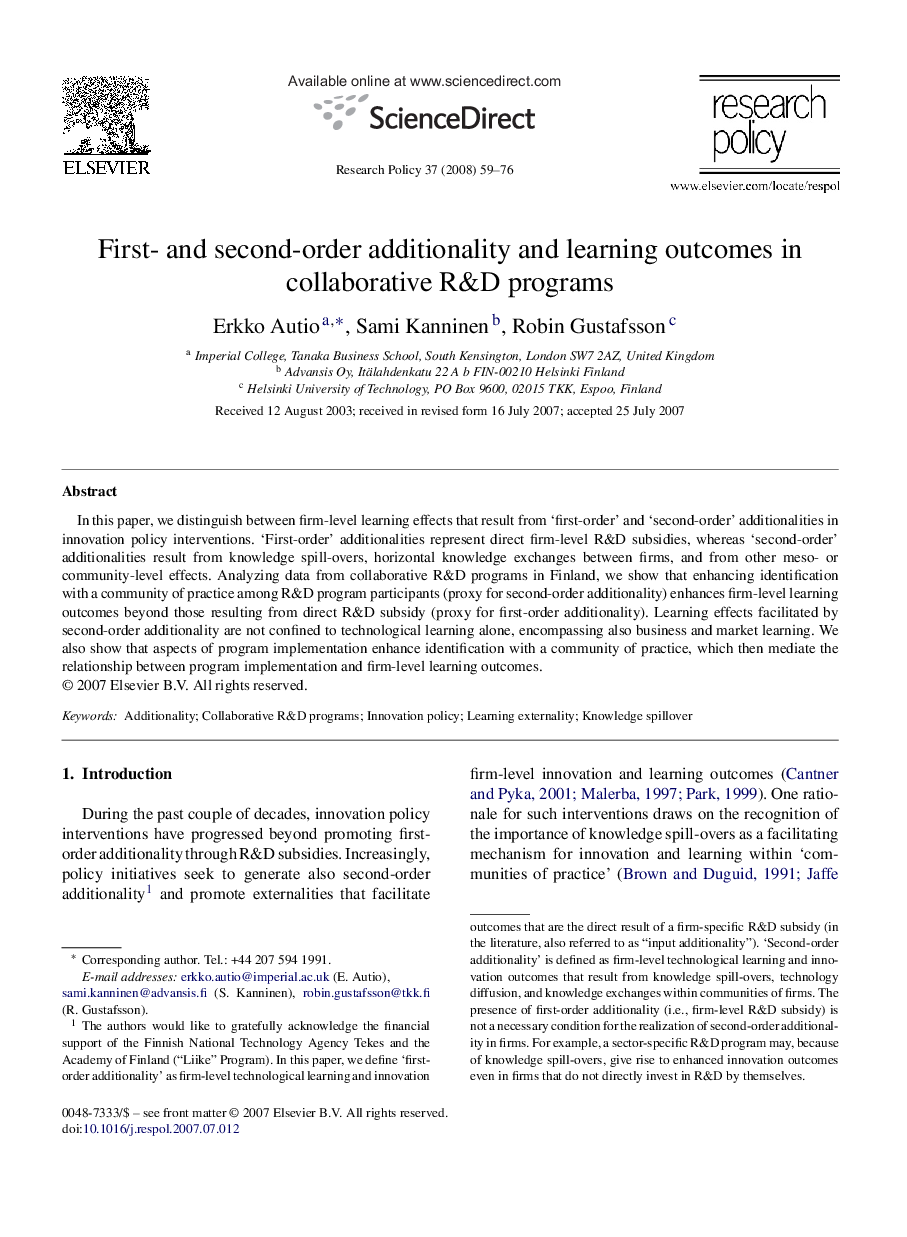| Article ID | Journal | Published Year | Pages | File Type |
|---|---|---|---|---|
| 984284 | Research Policy | 2008 | 18 Pages |
In this paper, we distinguish between firm-level learning effects that result from ‘first-order’ and ‘second-order’ additionalities in innovation policy interventions. ‘First-order’ additionalities represent direct firm-level R&D subsidies, whereas ‘second-order’ additionalities result from knowledge spill-overs, horizontal knowledge exchanges between firms, and from other meso- or community-level effects. Analyzing data from collaborative R&D programs in Finland, we show that enhancing identification with a community of practice among R&D program participants (proxy for second-order additionality) enhances firm-level learning outcomes beyond those resulting from direct R&D subsidy (proxy for first-order additionality). Learning effects facilitated by second-order additionality are not confined to technological learning alone, encompassing also business and market learning. We also show that aspects of program implementation enhance identification with a community of practice, which then mediate the relationship between program implementation and firm-level learning outcomes.
